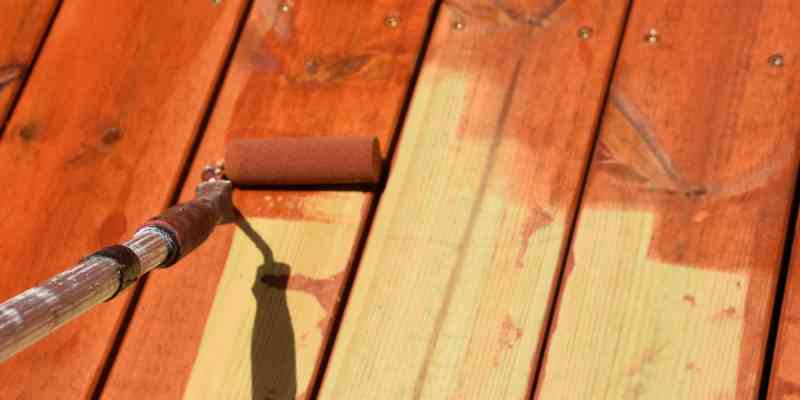To bring out the natural color of wood, use a high-quality wood conditioner and apply a clear finish. Sand the surface lightly to enhance the wood grain before treatment.
Wood is a timeless material prized for its beauty and warmth. Over time, dirt, grime, and old finishes can dull its natural hue. Restoring the vibrancy of wood not only enhances its appearance but also extends its lifespan. Various methods can effectively unveil the rich colors hidden beneath layers of dust or previous finishes.
Whether dealing with furniture, flooring, or cabinetry, knowing how to treat and maintain wood is essential. This guide will explore practical techniques to rejuvenate wood, helping you appreciate its natural beauty while ensuring its longevity. Embrace the art of wood care to transform your space with stunning, vibrant surfaces.
Introduction To Natural Wood Beauty
Wood is a beautiful material. Its color can change with light and age. Enhancing wood color is important for many reasons.
Natural wood color improves the overall look of furniture and decor. It helps to highlight the grain and texture of the wood. This makes each piece unique and appealing.
Understanding wood color can also help in choosing the right stain or finish. A good choice enhances the wood’s natural beauty and protects it. This leads to long-lasting results.
| Goal | Description |
|---|---|
| Enhance Appearance | Showcase the natural beauty of wood. |
| Protect Wood | Prevent damage from moisture and sunlight. |
| Increase Value | Well-maintained wood can be more valuable. |

Types Of Wood And Their Natural Colors
Hardwoods and softwoods have unique characteristics. Hardwoods come from deciduous trees. They tend to be denser and stronger. Common types include oak and maple. Softwoods come from coniferous trees. These are lighter and easier to work with. Examples include pine and cedar.
Each wood species shows different natural colors. For instance, oak has a warm, golden hue. Maple displays a lighter, creamy color. Pine can have a yellowish or reddish tint. Cedar often features a rich, reddish-brown shade. These variations enhance the beauty of wood.
| Wood Type | Natural Color |
|---|---|
| Oak | Golden |
| Maple | Creamy |
| Pine | Yellowish/Reddish |
| Cedar | Reddish-Brown |
Preparation Steps Before Enhancing
Start by cleaning the wood surface thoroughly. Use a soft cloth to remove dust and dirt. For tougher stains, a mild soap solution works well. Rinse with clean water and let it dry completely.
Next, use proper sanding techniques. Begin with coarse sandpaper for rough areas. Gradually move to finer sandpaper for a smooth finish. Always sand in the direction of the wood grain to avoid scratches.
After sanding, wipe the surface with a damp cloth. This will remove any dust particles. Allow it to dry before applying any wood treatment or finish.
Choosing The Right Finish
Choosing the right finish can enhance the natural beauty of wood. Oil-based finishes provide a rich color and deep shine. They are durable and ideal for high-traffic areas. Drying time is longer, so plan accordingly.
Water-based finishes are eco-friendly and easy to clean. They dry quickly and have less odor. These finishes maintain the wood’s natural look and are great for indoor projects.
Wax finishes give a soft, natural appearance. They are easy to apply and reapply. Regular maintenance is needed to keep the finish looking fresh.
Application Techniques For Even Color
Choosing between a brush and a rag for application can affect color. A brush allows for more control and even coverage. Use it for detailed work and hard-to-reach areas. Rags provide a faster method and can create a smooth finish. They work well for large surfaces.
Avoiding common mistakes is key. Don’t apply too much product at once. This can lead to uneven color and streaks. Always test on a small area first. This ensures the desired effect. Clean tools between different colors to prevent mixing. Allow each layer to dry completely before adding more. This helps achieve the best result.
The Role Of Stains And Dyes
Stains and dyes are important for enhancing wood’s natural beauty. They help bring out the wood grain and color. Choosing the right shade is key to achieving the desired look.
Use stain when you want to change the wood’s color. Stain adds depth and richness. It is perfect for darker woods or to highlight wood patterns.
Select shades based on the wood type. Light woods may benefit from lighter stains. Darker woods can handle bolder colors. Test a small area first for the best results.
| Wood Type | Recommended Stain Shade |
|---|---|
| Maple | Light Honey |
| Oak | Dark Walnut |
| Pine | Soft White |
| Cherry | Rich Red |
Maintaining Wood Color Over Time
To keep wood looking great, regular cleaning is essential. Dust and dirt can dull its shine. Use a soft cloth to wipe surfaces weekly. For deeper cleaning, mix mild soap with warm water. Avoid harsh chemicals that can damage the finish.
Reapplying finishes is also important. Choose the right finish for your wood type. Every few years, apply a new coat to protect and enhance color. Sand the surface lightly before applying. This helps the new finish stick better.
Remember to test any product in a small area first. This ensures it won’t change the wood’s color. Keeping wood clean and well-finished will help it look beautiful for years.
Creative Tips And Tricks
Mixing different finishes can create unique wood colors. Start with a base coat that complements the wood. Then, layer on a glaze or stain to achieve depth. Always test on a small area first.
Using sunlight can naturally enhance the wood’s color. Place the wood in a sunny spot for a few days. The UV rays will bring out the beautiful tones. Protect the wood with a finish after this process.

Frequently Asked Questions
How Can I Enhance The Wood’s Natural Color?
To enhance the wood’s natural color, start by sanding the surface to remove any imperfections. Next, apply a wood conditioner to even out the absorption. Finally, use a clear finish or a natural oil to protect and showcase the wood’s inherent beauty, bringing out its unique tones.
What Products Help Reveal Wood’s Natural Hue?
To reveal wood’s natural hue, consider using products like mineral spirits, linseed oil, or tung oil. These products penetrate the wood, enhancing its grain and color. Always test a small area first to ensure desired results and compatibility with the wood type.
Does Staining Affect The Natural Color Of Wood?
Yes, staining can alter the natural color of wood. Stains add pigments that may overshadow the wood’s inherent tones. If you want to maintain the natural color, consider using a clear finish or a light stain designed to enhance rather than cover.
How Often Should I Maintain The Wood’s Color?
Regular maintenance is crucial to preserving wood’s color. Reapply protective finishes every 1-3 years, depending on exposure to sunlight and wear. Regular cleaning also helps maintain the appearance, preventing dirt buildup that can dull the wood’s natural beauty.
Conclusion
Bringing out the natural color of wood enhances its beauty and character. By choosing the right techniques and products, you can achieve stunning results. Regular maintenance will ensure your wood remains vibrant for years. Embrace these methods to showcase your wood’s unique charm and elevate your space effortlessly.

